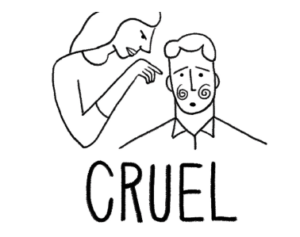 This week we continue the serialization of, How (NOT) to Be a Leader Volume 1, in preparation for the release of the next two books, How (NOT) to Build a Great Team and How (NOT) to Create a Winning Strategy. We hope you will enjoy Chapter 22 – Hazing as an Art Form
This week we continue the serialization of, How (NOT) to Be a Leader Volume 1, in preparation for the release of the next two books, How (NOT) to Build a Great Team and How (NOT) to Create a Winning Strategy. We hope you will enjoy Chapter 22 – Hazing as an Art Form
Sent: Sunday, April 2 at 9:49 pm
From: CEO
To: Management Team
Subject: Performance Transparency
Team,
Let’s face it, we’ve got a performance problem on our team. I’d like to see a stack ranking of all the PMs based on the amount of Q2 revenue they’ve managed and their respective gross margins. Once we have that, I’d like to call a meeting, get them all in a room, and put some feet to the fire. The slackers need to know who’s carrying their weight and the performers need to be publicly rewarded for their hard work and accomplishments. I don’t have a problem sending this report to allstaff@ either so let’s plan on doing that directly after the meeting.
This is a business, not summer camp. And you are the leader, responsible for inspiration and positive motivation, but also for administering the smackdown when it’s required. Peak performance means cracking the whip every now and again, so if you have to do it, do it right and do it hard.
Great leaders are masters of discipline and obedience. Oftentimes this means making your authority and your expectations crystal clear. Not only do you need to lead by example, you need to make examples of those who are not taking your leadership and your requirements seriously. There should be nowhere in your organization to hide and nowhere to run when the going gets tough.
There are many proven techniques and methodologies when the situation requires the reset of performance standards. Stack ranking is an effective way to let everyone know who the performance winners and losers are. The people on the top of the stack will be seen as exemplary performers, respected and revered. The people on the bottom of the stack will be seen as slackers and the bag to drag for others. This will cause a tribal phenomenon known as corporacide—a cost-effective and swift method for making room for new talent.
Three‑hundred‑sixty‑degree anonymous feedback is also an effective way to publicize humiliation and shame that are deserved for lack of performance. Being anonymous in nature, it allows for brutally honest feedback, which is often needed by those too clueless to recognize their own laziness or ineffectiveness. Peak performers need to vent their frustration with their coworkers, and anonymous feedback is a fantastic way to accomplish your mission for both the giver and the receiver of the feedback.
Leadership means sometimes it’s going to hurt them a lot more than it’s going to hurt you. So be swift, decisive, and make every whack count.
Let’s Get Real
Kiss your culture goodbye if you resort to shame, humiliation, or bullying. Bullying and abuse do nothing but degrade and debase your employees, and not only are they wrong and unethical, they are downright dangerous. These practices can inflict lasting emotional damage to those who are subjected to them as well as those who are forced to administer them. They can cause permanent damage to personal confidence while derailing careers. In the worst cases, they can incite violence, retribution, and self‑harm.
As a leader, you are 100 percent responsible for the safety and well‑being of your employees at all times. Ensuring that abuse is not happening anywhere in your organization is on you. If it happens below you, deal with it immediately by terminating the abusers. If it happens above you, report it to your state’s department of labor immediately, and include specifics.
Bullying happens in the workplace at a much higher rate than most of us realize. The Workplace Bullying Institute (WBI) defines bullying as “repeated mistreatment: sabotage by others that prevented work from getting done, verbal abuse, threatening conduct, intimidation, and humiliation.” Just the fact that the WBI exists should be troubling enough for most employers and employees alike. And to prove the point, a 2010 poll conducted by Zogby International for WBI showed that fully 37% of the total US workforce had been bullied at work. What’s even more frightening is that an additional WBI report showed that 52% of time employees reported that employers did nothing to stop the bullying.*
* Brené Brown, “3 Ways to Kill Your Company’s Idea Stifling Shame Culture,” Fast Company, September 13, 2012.
